
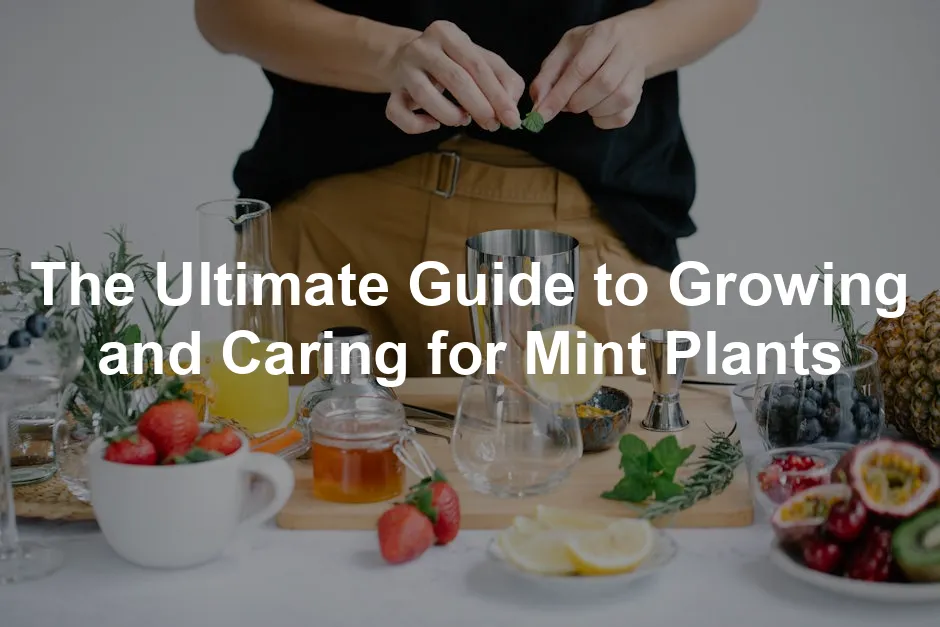
The Ultimate Guide to Growing and Caring for Mint Plants
Introduction
Mint plants are versatile and easy to grow. These delightful herbs add fresh flavor to a variety of dishes and beverages. They’re also known for their medicinal properties, making them an excellent addition to your home garden. With the rise in home gardening, mint is a perfect choice for beginners looking to cultivate their green thumb.
To give your mint the best start, consider using Miracle-Gro Water Soluble All Purpose Plant Food. This all-purpose plant food will help your mint flourish with the nutrients it craves!
Summary and Overview
Mint plants belong to the Mentha genus, with several popular varieties to choose from. Common types include peppermint, spearmint, and chocolate mint. They tend to grow vigorously, forming lush, leafy clumps that can thrive both indoors and outdoors. Mint is known for its adaptability; it can flourish in various conditions, making it suitable for pots on your kitchen counter or directly in your garden. In this guide, you will learn about growing conditions, types of mint, and essential care tips to ensure your mint plants thrive.
For those looking to grow mint indoors, investing in an AeroGarden Harvest Indoor Garden can be a game-changer. This hydroponic system allows you to grow fresh herbs year-round, right on your countertop!

Common Types of Mint Plants
Mint comes in several exciting varieties, each with unique flavors and uses:
- Peppermint: Known for its sweet and tangy flavor, peppermint is perfect for herbal teas, desserts, and sauces. It grows best in USDA Hardiness Zones 3 through 11.
- Spearmint: This variety has a refreshing taste, reminiscent of your favorite gum. It’s commonly used in cocktails and salads. Spearmint thrives in Hardiness Zones 5 to 9.
- Chocolate Mint: A fascinating cousin of peppermint, this variety has a minty-chocolate aroma. It’s great for desserts and adds a unique twist to beverages. Chocolate mint also grows well in Hardiness Zones 5 to 9.
- Other Varieties: Don’t forget about lesser-known types like Pineapple Mint, which has a fruity flavor, and Eau de Cologne Mint, known for its pleasant fragrance. Curly Mint adds texture with its ruffled leaves. These varieties can be grown in various regions, so check your local USDA Hardiness Zone for the best options.
Each type offers culinary possibilities, enhancing your cooking and baking adventures. So, which mint variety do you want to grow?
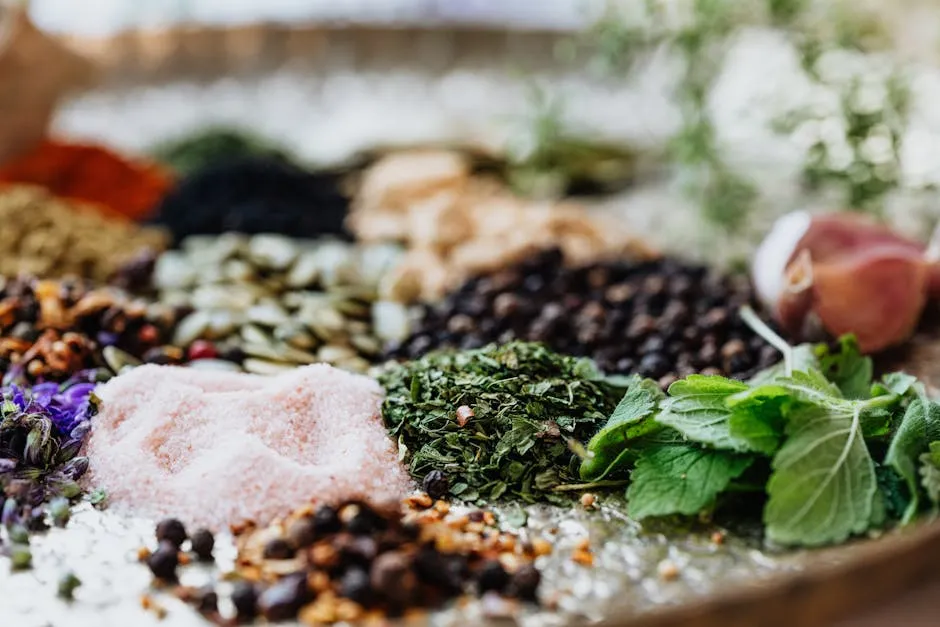
Growing Conditions for Mint
Soil Requirements
Mint thrives in well-drained soil that’s rich in nutrients. You can use a loamy or sandy potting mix for the best results. Avoid heavy clay soils, as they can hold too much moisture. Good drainage is crucial because mint roots can rot in soggy conditions. To improve drainage, mix organic perlite or coarse sand into your soil. Testing your soil quality can help you understand its nutrient content. This step ensures your mint gets everything it needs to flourish.

Light Requirements
Mint plants prefer bright, indirect sunlight. They need about 4 to 6 hours of light daily. If you’re growing mint indoors, place it near an east or west-facing window. Be cautious of harsh afternoon sunlight; it can scorch the leaves. If your mint starts to look pale or leggy, it might be seeking more light. Consider rotating your pot occasionally to ensure even growth. Choosing the right spot for your mint makes a significant difference in its health and flavor.
Watering and Humidity
Mint enjoys consistently moist soil but hates sitting in water. Water your plants when the top inch of soil feels dry. Wilting leaves often indicate underwatering, while yellowing leaves can suggest overwatering. Aim for humidity levels around 40-60% for optimal growth. If your home is dry, mist your mint regularly or use a pebble tray filled with water. A simple watering schedule can help you maintain the right moisture balance. This routine will keep your mint looking vibrant and lush.
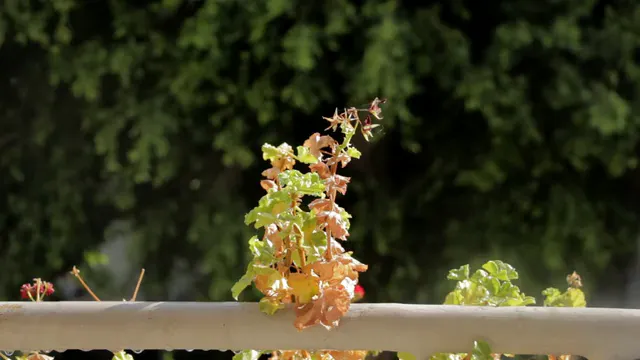
Planting Mint
Propagation Methods
Mint is a resilient herb that thrives with the right propagation methods. You can easily propagate mint using stem cuttings or root division. Here’s a simple step-by-step guide for each method:
Stem Cuttings:
- Choose a healthy mint stem and cut it just below a leaf node.
- Remove the lower leaves to expose the stem.
- Place the cutting in a glass of water, ensuring the node is submerged.
- Change the water every few days to keep it fresh.
- After about a week, you’ll notice roots forming. Once they are at least an inch long, plant the cutting in well-drained soil.
Root Division:
- Select a mature mint plant and gently dig it up.
- Carefully separate the roots into smaller sections, ensuring each has healthy leaves.
- Replant each section in its own pot or garden space.
For both methods, consistent moisture is key for successful rooting. Be patient, and soon you’ll have thriving mint plants to enjoy. Why not try propagating your own mint plants today? You can even keep track of your progress using a gardening journal to document your plant care journey!

Planting Outdoors vs. Indoors
Deciding whether to plant mint indoors or outdoors depends on your available space and conditions. Both methods have their benefits and challenges.
Outdoor Planting:
When planting mint outside, choose a spot with partial sunlight. Mint thrives in rich, well-drained soil. Space plants about 18-24 inches apart to allow for their vigorous growth. Consider using a garden bed or a dedicated pot to prevent mint from spreading uncontrollably. Adding mulch can help retain moisture and keep weeds at bay.
Indoor Planting:
For container gardening, select a pot with drainage holes. Use a nutrient-rich potting mix, and position your mint near a window with indirect sunlight. Mint enjoys humidity, so misting the leaves occasionally can help. Remember to water when the top inch of soil feels dry. You can also use indoor plant watering globes to help maintain consistent moisture.
Ultimately, the choice is yours! Think about your space and lifestyle to decide which method suits you best. Happy planting!
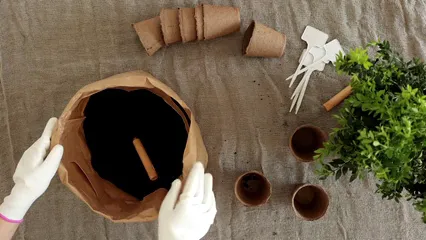
Caring for Mint Plants
Fertilization
Mint plants are heavy feeders. To keep them thriving, fertilize every 4 to 6 weeks during the growing season. You can choose between organic and synthetic fertilizers. Organic options, like compost or liquid seaweed, are great for eco-friendly gardening. They nourish the soil while promoting healthy growth. Synthetic fertilizers can provide quick boosts but may lack long-term benefits. Watch for signs of nutrient deficiency, such as yellowing leaves or stunted growth. These indicate your mint needs a little extra love. For a reliable option, consider using a balanced all-purpose fertilizer like Miracle-Gro. This will help your mint flourish!
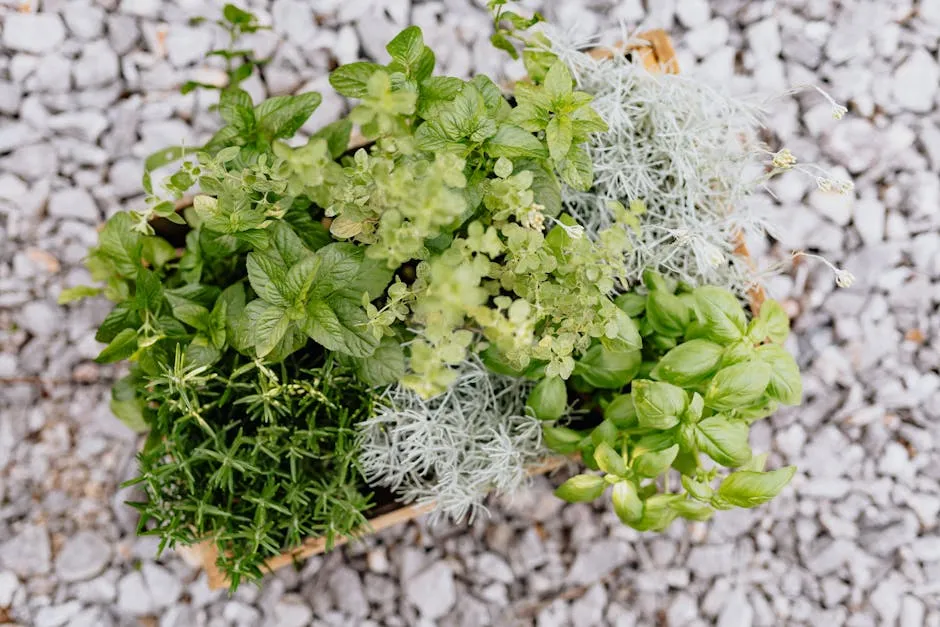
Pruning and Harvesting
Pruning is essential for robust mint growth. The best time to harvest is just before the plant blooms. This is when the flavor is at its peak. Use sharp scissors to cut stems just above a leaf node. This encourages bushier growth and maintains the plant’s health. Regularly harvesting also prevents legginess, resulting in a fuller appearance. Don’t be afraid to take a generous handful; mint grows back quickly! Start harvesting as soon as you have enough leaves to enjoy. Your fresh mint will elevate your dishes and drinks. And if you’re looking for a handy tool, check out these herb scissors with 5 blades to make cutting a breeze!
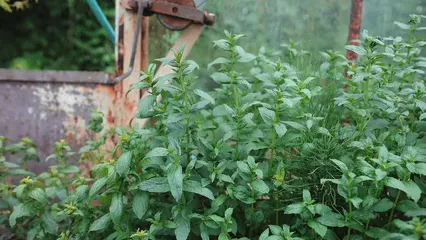
Common Pests and Problems
Mint plants can attract a few pests and face some common diseases. Aphids, spider mites, and whiteflies are frequent visitors. These pests love to munch on mint leaves, weakening the plant. For organic pest control, consider using insecticidal soap or organic neem oil spray. Both are effective and safe for your garden. Look for signs of disease, such as wilting, discoloration, or unusual spots on leaves. These may indicate fungal infections or other issues. Regularly monitoring your plants can help catch problems early. By staying vigilant, you can keep your mint healthy and thriving!

For effective pest management, you might want to explore organic pest control methods that can be applied to various plants, including mint.
Conclusion
Growing mint is a rewarding and straightforward endeavor. Whether you opt for pots on your windowsill or planting in the garden, mint thrives in almost any environment. Its growth is rapid, making it perfect for beginners. Once you’ve cultivated your own mint, the culinary possibilities are endless. From refreshing teas to vibrant salads, fresh mint adds a delightful twist to your dishes. To keep your mint plants looking fabulous, consider using a plant mister spray bottle to keep those humidity levels just right!
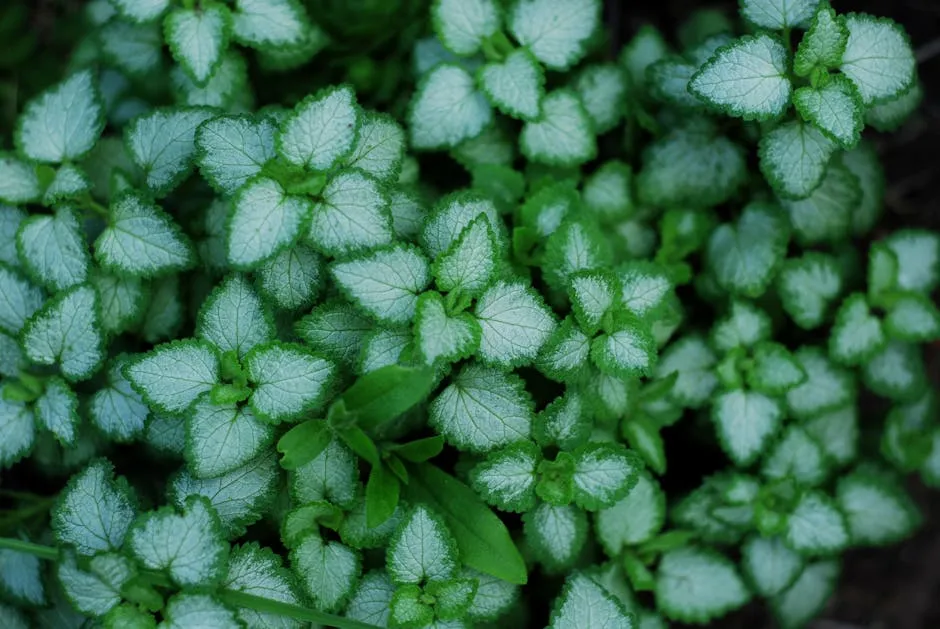
FAQs
How fast does mint grow?
Mint has a quick growth rate, often reaching harvestable size within two to three months from seeds. If you use cuttings, you’ll see roots developing in about a week. This rapid growth makes it an ideal choice for new gardeners looking to see quick results. For best results on how to grow mint, ensure you provide adequate sunlight and water.
Can mint be grown indoors?
Yes, mint can thrive indoors! For indoor mint growing, choose a pot with good drainage and a nutrient-rich potting mix. Place it near a window where it receives bright, indirect light. Regularly misting the leaves can help maintain humidity, which is beneficial for mint houseplants.
Does mint need a lot of water?
Mint prefers consistently moist soil but can suffer from overwatering. Water when the top inch of soil feels dry, and watch for signs of wilting leaves, which indicate underwatering. To ensure mint care tips are met, avoid letting the plant sit in standing water.
Can different types of mint cross-pollinate?
Yes, different types of mint can cross-pollinate if planted close together. To prevent this, consider mint pollination gardening tips such as growing them in separate containers or garden beds. This way, you can enjoy distinct flavors without hybridization.
How do I revive a wilting mint plant?
To revive mint, check the soil moisture first. If it’s dry, water it thoroughly. If it’s overwatered, allow the soil to dry out before watering again. Prune any dead or yellowing leaves. With these simple plant care steps, your mint should bounce back quickly.
Please let us know what you think about our content by leaving a comment down below!
Thank you for reading till here 🙂 And don’t forget to check out our gardening tool set to make your gardening experience even better!
All images from Pexels



